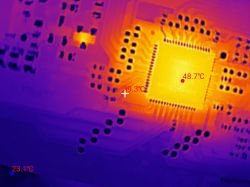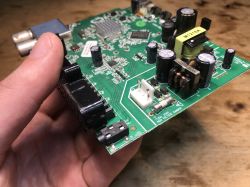Have you ever wondered what tools were used to develop games for consoles in the early days of the computer age?
ATARI, for example, maintained a system based on the Data General MV/8000, a very expensive computer at the time, on which you could compile your program after subscribing and paying for a modem connection.
This was a very expensive solution and not without its drawbacks, not least because, in the event of an error in the code, the whole operation, and therefore its cost, had to be repeated until success was achieved.
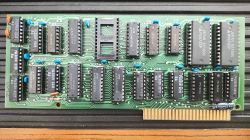 .
.
With computer games being a big business, it didn't take long for someone to figure out how to solve these problems and make some money in the process.
One of the companies that took on this challenge was Frobco.
They came up with the idea of using arguably the best software computer ever, the Apple II, to do it.
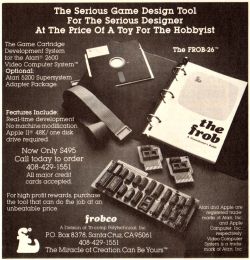 .
.
To compile the program, all they had to do was use one of the many assemblers, or better still macro assemblers, available for that platform.
Construct a suitable card to provide connectivity to the Atari 2600 console and create specialised software.
A 4 kB of RAM was inserted into the card built in the Apple II, which was shared between the Atari console and the Apple II computer, whose job was to emulate the cartridge memory.
Any change to the contents of the memory was immediately visible to both the Apple II and the Atari 2600. In addition, the card provided access to all hardware registers in the console, so that it was possible, for example, to create sprites and immediately observe their effect on the screen generated on the console, debug program memory, etc. etc.
.
Example of code compilation and runtime:
.
Creating a sprite
When the Atari 5200 console came on the market using the same specialised chips as the ATARI 8-bit computers, the company offered an extension to the FROB-52 system for this console.
The company also offered a similar system for the ColecoVision console.
In addition to this, ready-made cartridge circuit boards could be purchased, into which it was sufficient to insert a programmed EPROM, as well as an EPROM programmer for the Apple II.
So that the whole system from the idea to producing your game cartridge could be had on your desk. .
.
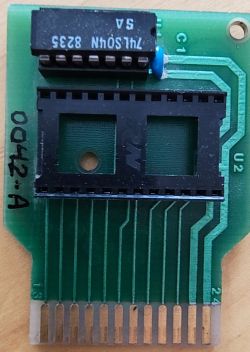
Some time ago the system was able to be recreated so that today, if anyone is willing, they can build it for themselves and make a game for the Atari 2600
https://gitlab.com/retroabandon/apple2-re/-/tree/main/frob
ATARI, for example, maintained a system based on the Data General MV/8000, a very expensive computer at the time, on which you could compile your program after subscribing and paying for a modem connection.
This was a very expensive solution and not without its drawbacks, not least because, in the event of an error in the code, the whole operation, and therefore its cost, had to be repeated until success was achieved.
 .
.
With computer games being a big business, it didn't take long for someone to figure out how to solve these problems and make some money in the process.
One of the companies that took on this challenge was Frobco.
They came up with the idea of using arguably the best software computer ever, the Apple II, to do it.
 .
.
To compile the program, all they had to do was use one of the many assemblers, or better still macro assemblers, available for that platform.
Construct a suitable card to provide connectivity to the Atari 2600 console and create specialised software.
A 4 kB of RAM was inserted into the card built in the Apple II, which was shared between the Atari console and the Apple II computer, whose job was to emulate the cartridge memory.
Any change to the contents of the memory was immediately visible to both the Apple II and the Atari 2600. In addition, the card provided access to all hardware registers in the console, so that it was possible, for example, to create sprites and immediately observe their effect on the screen generated on the console, debug program memory, etc. etc.
Example of code compilation and runtime:
Creating a sprite
When the Atari 5200 console came on the market using the same specialised chips as the ATARI 8-bit computers, the company offered an extension to the FROB-52 system for this console.
The company also offered a similar system for the ColecoVision console.
In addition to this, ready-made cartridge circuit boards could be purchased, into which it was sufficient to insert a programmed EPROM, as well as an EPROM programmer for the Apple II.
So that the whole system from the idea to producing your game cartridge could be had on your desk.

Some time ago the system was able to be recreated so that today, if anyone is willing, they can build it for themselves and make a game for the Atari 2600
https://gitlab.com/retroabandon/apple2-re/-/tree/main/frob
Cool? Ranking DIY Helpful post? Buy me a coffee.



